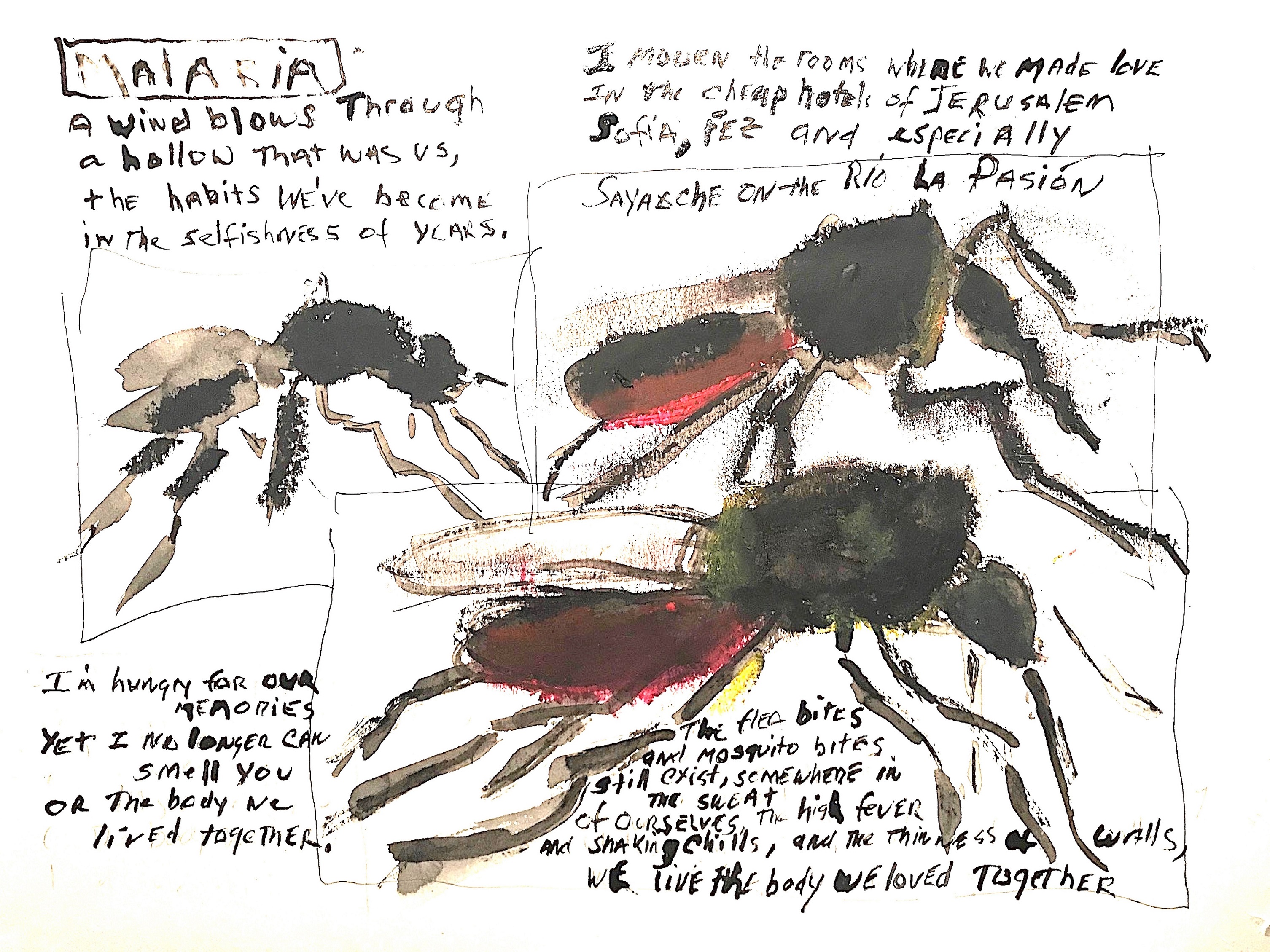
Malaria

Garrett Phelan
3 Questions for Garrett
What was your process for creating this work?
Thinking about what happens to the fevered passion of a love that ages, and maybe
is diminished or even lost, I first wrote the poem. As I wrote, two memories came together. One was of living in Leticia, Colombia many years ago when it was a small but vibrant village 2000 miles up the Amazon River. We lived with a man who suffered periodic attacks of malaria. They were quite intense. The other memory was when we lived in Guatemala and five of us made an expedition into the Petén in search of what was, at the time, obscure Mayan ruins. We hiked on dirt roads and caught rides on corn boats on the Rio de la Pasión. At one site I mistakenly stepped on a mound of red fire ants and they quickly crawled up and covered my leg, stinging me aggressively. That started me thinking about the passion for movement and the passion of love coming together and I started to flesh out the poem. When I had the poem, I wasn’t satisfied that it was conveying the intensity I wanted.
Malaria A wind blows through a hollow that was us and the habits we’ve become in the selfishness of years. I’m hungry for our memories yet I can no longer smell you or the body we lived together. I mourn the rooms where we made love. The cheap hotels of Jerusalem, Sofia, Fez, and especially Sayaxche on the Rio La Pasión. The flea bites and mosquito bites still exist, somewhere in the sweat of ourselves. The high fever, the shaking chills, and the thinness of walls, we live the body we loved together.
The poem asked for a different way to be presented. Although I worked and revised the poem until I was satisfied with the language and imagery, I still felt there was something even more this poem was demanding.
I thought about a broadside and started playing with visual images. I was most fascinated by the malaria-carrying mosquito and the fever it can produce in a human.
What is the significance of the form/genre you chose for this work?
I wanted the form to convey a sense of a malarial fever to intensify the relationship of the two lovers in the poem. I drew malaria-carrying mosquitoes first. The danger they present and what little you can do to protect yourself. I wanted the text of the poem to combine with those mosquitos on the hunt for human blood. I tried inserting word-processed text onto the images. Didn’t work. I then thought, why not handwritten text, sort of as a letter one of the lovers was writing to the other while suffering a malarial/passion attack. A nicely handwritten text didn’t reflect my intention either; I wanted something more fevered. Using twig and sumi ink to write around the images of mosquitos, I allowed the difficulty of writing with a twig and ink to become the fevered hand of the speaker.
What is the significance of this work to you?
First, it brings together some images of intense moments in a relationship that has survived many years, and in many places, especially in some challenging situations. How much of that passion still exists, how much has been lost? And, if not lost, trying to figure out what of that intense malarial passion still exists and in what new form. I think this applies not only to a relationship between two people, but to any creative passion you have, be it poetry, art or music.
Garrett Phelan is the author of the chapbook Outlaw Odes (Antrim House) and micro-chapbooks Unfixed Marks and Standing where I am (Origami Poem Project). His poems have appeared in numerous publications including Slipstream, Potomac Review, Sheila-Na-Gig, Connecticut River Review, Third Wednesday, and Off the Coast. He is a Pushcart Prize nominee. His artwork has appeared in Ekphrastic Review, Barzakh Magazine, cover designs for Outlaw Odes and Standing where I am and in exhibits in DC, CT and MD.